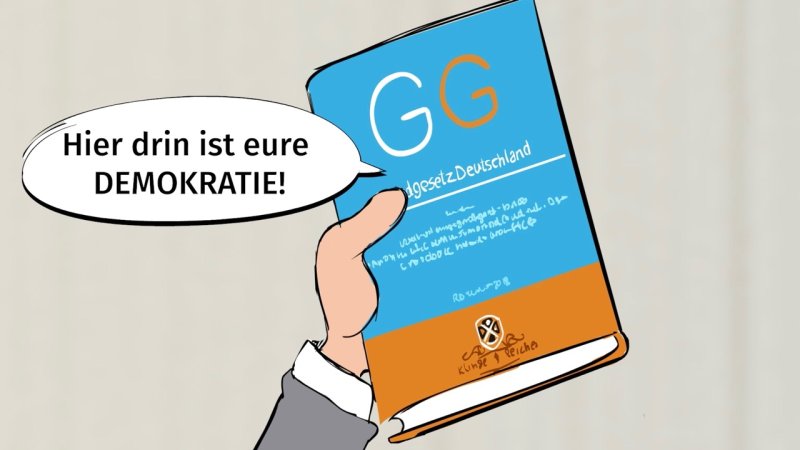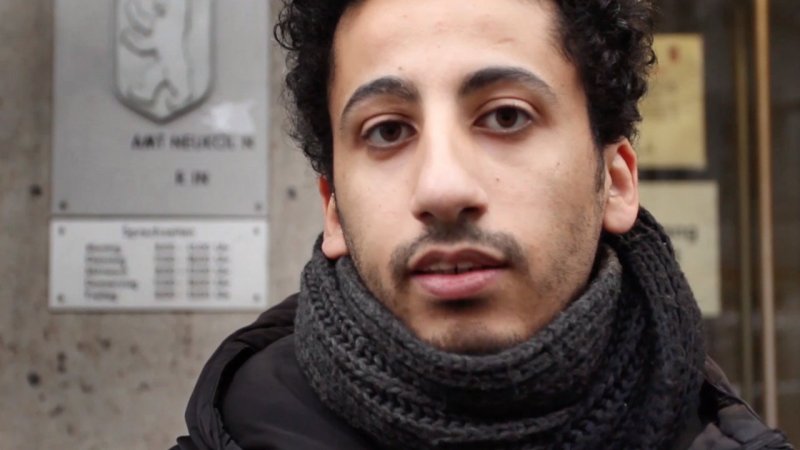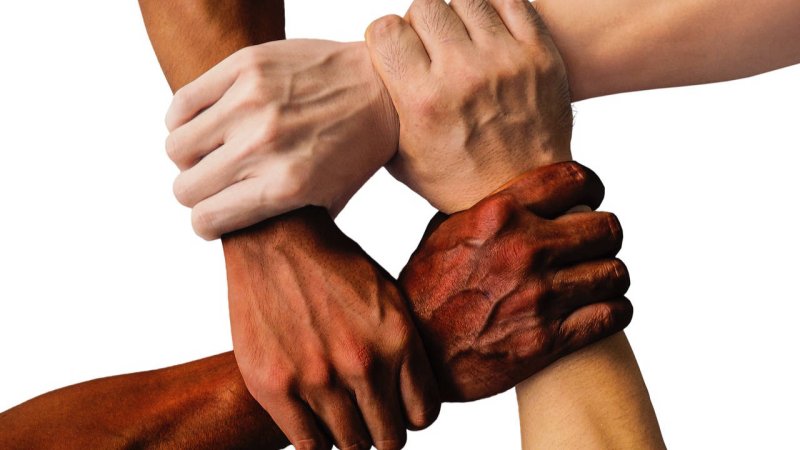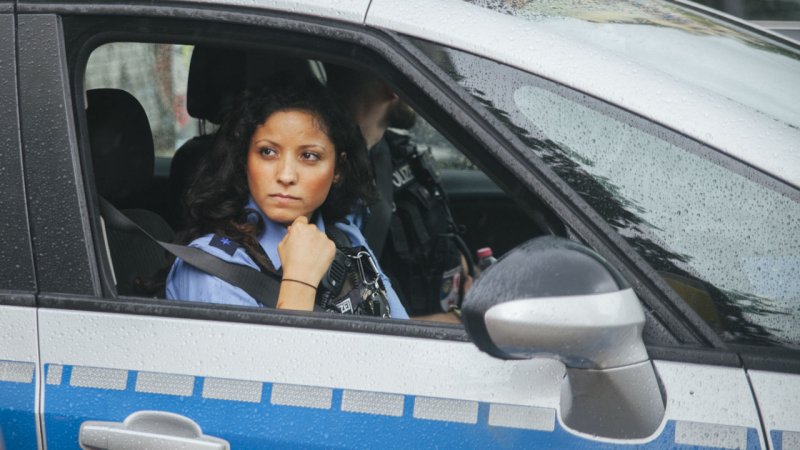A party is an association of people who have the same political goals and want to participate in the political affairs of a country. Each party has a program which clarifies toward what goals it strives.
In order to be admitted to a federal or state election in Germany, each party must prove that it is stable, has many members and a presence in public. Upon meeting these requirements, a party can register with the Federal Election Commissioner ("Bundeswahlleiter"). If a party does not participate in a Federal Parliament or state election for six years, it loses its status as a party.
There are countless parties in Germany. We briefly present the most notable seven below. Each of these parties has an abbreviation (CDU, SPD, ...) and colour (black, red, ...). When discussing or reporting on the parties, oftentimes only the abbreviation or the colour is used. You can find a comprehensive list of political parties in Germany on wikipedia.de.
The CDU (Christian Democratic Union of Germany), currently the largest party in Germany, is often referred to as the "People's Party" or "Volkspartei". The CDU was founded in 1945. From 2005 to 2021, CDU provided the first and (so far) only female Federal Chancellor in Germany. The CDU is currently an opposition party in the Bundestag.
The CDU is oriented towards a market economy and also stands for traditional Christian values.
The party is associated with the colour black.
The CSU (Christian Social Union) is the "sister party" of the CDU- and together, they are referred to as the "Union". In elections, the CSU runs in Bavaria and the CDU in the remaining 15 federal states.
The CSU has similar objectives as the CDU, but is more conservative and more traditional and fights primarily for the interests of the state of Bavaria.
The colour of the CSU is blue.
Founded in the 19th century, the SPD (Social Democratic Party of Germany) is the oldest party in Germany. It is also known as "People's Party" ("Volkspartei") and is currently in the federal government together with the Greens and FDP.
The SPD advocates social justice and is close to the worker unions.
Red is the colour of the SPD.
The Alliance 90/The Greens (Bündnis 90/Die Grüne) was founded in 1993. It is an amalgamation of the West German party "Die Grünen", (founded in 1980) and the East German party "Bündnis 90" (founded in 1991). The Greens developed from various social movements such as the anti-nuclear movement, the peace movement and the environmental movement -and the "Alliance 90" party was composed of multiple civil rights movements in East Germany.
The party is primarily committed to environmental protection and social issues.
Alliance 90/The Greens has been part of the federal government again since 2021.
The colour of the party is green.
The FDP (Free Democratic Party) was founded in 1948. It is a relatively small party, but has often been involved in the federal government and mostly works with the CDU/CSU.
FDP has been part of the federal government again since 2021.
The FDP is committed to a liberal market economy and a simple tax system.
The colour of the party is yellow.
The Left Party was founded in 2005. It emerged from SED, which was a GDR party known as PDS (Party of Democratic Socialism) and a split-off of the SPD. It is a small party, especially popular in the eastern German states. Despite its strong presence in local, state and federal politics, the left was never managed to become part of a government in the Bundestag. However, it has been an opposition party in the parliament (Bundestag) without interruption since 2005.
The left Party stands for social justice and peace.
The colour of the party is red, but it is often shown as dark red or purple.
The AfD (Alternative for Germany) was founded in 2013 as a protest party against the established ones. It is represented in all state parliaments and has been an opposition party in the parliament, "Bundestag", since 2017.
The AfD is a right-wing populist party. It opposes the European Union and the admission of refugees. The party regularly makes headlines as many of its members stand out due to extreme right-wing statements and membership in far-right groups. Due to its political disposition, large parts of the AfD are under the surveillance of the Federal Constitutional Court ("Bundesverfassungsgericht").
The colour of the AfD is blue.
All of the parties mentioned are currently represented in Parliament ("Bundestag"). On tatsachen-ueber-deutschland.de, you can check the number of seats each party has.
All German parties must observe the Basic Law in their guidelines, programs and activities. If the Federal Constitutional Court classifies a party as a threat to the liberal democratic order, it can be banned. In the history of the Federal Republic of Germany, so far, only two parties have been prohibited.
Here you can learn about the petitions, debates and elections in various languages.
News, documentaries, information and entertainment in short videos on the German TV Channel WDR.
Here you find up-to-date data, facts and hints regarding Germany in 12 languages.





